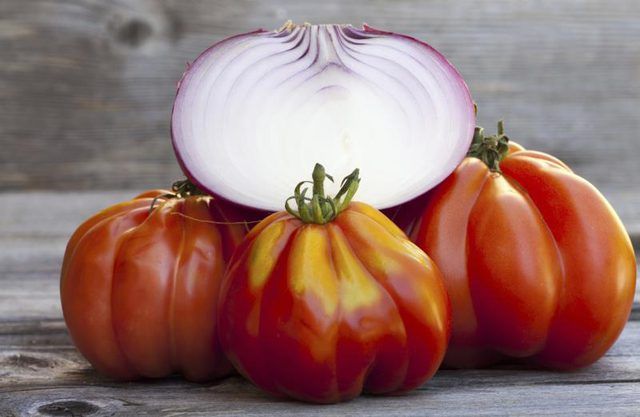Bulbs
Flower Basics
Flower Beds & Specialty Gardens
Flower Garden
Garden Furniture
Garden Gnomes
Garden Seeds
Garden Sheds
Garden Statues
Garden Tools & Supplies
Gardening Basics
Green & Organic
Groundcovers & Vines
Growing Annuals
Growing Basil
Growing Beans
Growing Berries
Growing Blueberries
Growing Cactus
Growing Corn
Growing Cotton
Growing Edibles
Growing Flowers
Growing Garlic
Growing Grapes
Growing Grass
Growing Herbs
Growing Jasmine
Growing Mint
Growing Mushrooms
Orchids
Growing Peanuts
Growing Perennials
Growing Plants
Growing Rosemary
Growing Roses
Growing Strawberries
Growing Sunflowers
Growing Thyme
Growing Tomatoes
Growing Tulips
Growing Vegetables
Herb Basics
Herb Garden
Indoor Growing
Landscaping Basics
Landscaping Patios
Landscaping Plants
Landscaping Shrubs
Landscaping Trees
Landscaping Walks & Pathways
Lawn Basics
Lawn Maintenance
Lawn Mowers
Lawn Ornaments
Lawn Planting
Lawn Tools
Outdoor Growing
Overall Landscape Planning
Pests, Weeds & Problems
Plant Basics
Rock Garden
Rose Garden
Shrubs
Soil
Specialty Gardens
Trees
Vegetable Garden
Yard Maintenance
About the Oxheart Tomato Plant
About the Oxheart Tomato Plant. Valued for their large, meaty fruits, Oxheart tomatoes (Solanum lycopersicum) usually have a broadly triangular shape that resembles an animal's heart. Sometimes called beef heart tomatoes, Oxheart tomatoes are heirloom varieties that exist in a number of colors. Varieties originated in different countries and have...

Valued for their large, meaty fruits, Oxheart tomatoes (Solanum lycopersicum) usually have a broadly triangular shape that resembles an animal's heart. Sometimes called beef heart tomatoes, Oxheart tomatoes are heirloom varieties that exist in a number of colors. Varieties originated in different countries and have rich, complex tastes. The shape can vary, even on the same plant, with some Oxheart tomatoes blocky or oblong.
Foliage and Growth Habit
Oxheart tomato plants generally have fern-like, rather wispy leaves and a sprawling, drooping habit. Plants may not look as robust as varieties with large leaves and upright growth habits but they yield plenty of tomatoes, All Oxheart tomatoes have indeterminate growth, which means they don't stop growing during their lifetime, continuing to flower and produce fruit until killed by frost. Provide Oxheart tomatoes with a stake or tomato cage when you plant them outside.
Pink Fruits
Several oxheart tomato varieties produce pink fruits. "Anna Russian" features clusters of two to three tomatoes that weigh between 8 and 16 ounces each. This variety has the advantage of early fruit maturation, producing tomatoes 65 to 70 days after planting out.
"Bull's Heart" is an old Russian variety that bears tomatoes that can weigh 2 pounds in 87 days. "Giant Oxheart" has high productivity, bearing clusters of two to seven 12-ounce to 2-pound fruits at branch ends.
Red Fruits
"Reif Italian Heart" produces red, heart-shaped fruits weighing 9 ounces to 1 pound. Maturing in 90 days, this variety has exceptionally large flowers. It is similar to "Reif Red Heart," which features smaller flowers and fruits weighing between 10 and 12 ounces that mature in 78 days.
Yellow Fruits
An heirloom that dates back to the early 1900s, "Yellow Oxheart" originated with a family in Virginia. The meaty, yellow fruits have a rich taste and good flavor balance. Weighing in at about 1 pound, "Yellow Oxheart" fruit mature in 79 days.
Black Fruits
Developed from the heirloom, round-shaped "Black Krim" tomato, "Brad's Black Heart" has fist-sized, Oxheart-shaped fruits that mature in 75 days. The complex, earthy, rich flavor is similar to "Black Krim." Tomatoes have a dark, greenish-red color
Growing Conditions
As with other types of tomatoes, Oxheart varieties are tender perennials grown as annuals. Wait until all danger of frost is gone before planting outside. They need at least eight hours of sun daily and well-draining soil rich in organic material. Before planting them in the garden, amend the soil with 3 to 4 inches of aged compost and dig it in. Provide stakes or tomato cages when you plant the tomatoes. Space plants 18 to 36 inches apart depending on the mature size of the particular variety.
Watering Needs
Regular, deep watering is best. Water should penetrate 6 to 8 inches into the soil to encourage deep, extensive roots. Where summer temperatures are moderate, tomatoes need about 1 inch of water weekly. In areas with hot, dry summers, water needs go as high as 2 inches weekly. If rain isn't sufficient, general watering guidelines are every four to five days when tomatoes are in sandy soils and every seven to 10 days on heavier soils.
Fertilizing Tomatoes
Avoid using fertilizers high in nitrogen because this encourages leaf and stem growth rather than fruit formation. Fertilize tomatoes when you plant them and every two weeks afterward. Use a product such as organic 3-1-1 at the rate of 1 tablespoon mixed with 1 gallon of water. Soak the soil thoroughly around the tomato.